Navigating Xenbase: An Integrated Xenopus Genomics and Gene Expression Database
- PMID: 29761462
- PMCID: PMC6853059
- DOI: 10.1007/978-1-4939-7737-6_10
Navigating Xenbase: An Integrated Xenopus Genomics and Gene Expression Database
Abstract
Xenbase is the Xenopus model organism database ( www.xenbase.org ), a web-accessible resource that integrates the diverse genomic and biological data for Xenopus research. It hosts a variety of content including current and archived genomes for both X. laevis and X. tropicalis, bioinformatic tools for comparative genetic analyses including BLAST and GBrowse, annotated Xenopus literature, and catalogs of reagents including antibodies, ORFeome clones, morpholinos, and transgenic lines. Xenbase compiles gene-specific pages which include manually curated gene expression images, functional information including gene ontology (GO), disease associations, and links to other major data sources such as NCBI:Entrez, UniProtKB, and Ensembl. We also maintain the Xenopus Anatomy Ontology (XAO) which describes anatomy throughout embryonic development. This chapter provides a full description of the many features of Xenbase, and offers a guide on how to use various tools to perform a variety of common tasks such as identifying nucleic acid or protein sequences, finding gene expression patterns for specific genes, stages or tissues, identifying literature on a specific gene or tissue, locating useful reagents and downloading our extensive content, including Xenopus gene-Human gene disease mapping files.
Keywords: Anatomy ontology; BLAST; GBrowse; Gene expression analysis; Genome database; Polyploid genome; Textpresso; Xenopus.
Figures
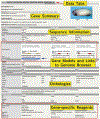

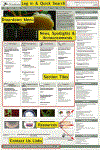
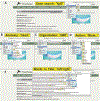

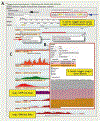
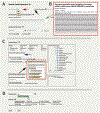

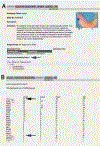


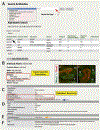
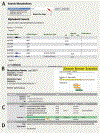

Similar articles
-
Xenbase: key features and resources of the Xenopus model organism knowledgebase.Genetics. 2023 May 4;224(1):iyad018. doi: 10.1093/genetics/iyad018. Genetics. 2023. PMID: 36755307 Free PMC article.
-
Xenbase: a genomic, epigenomic and transcriptomic model organism database.Nucleic Acids Res. 2018 Jan 4;46(D1):D861-D868. doi: 10.1093/nar/gkx936. Nucleic Acids Res. 2018. PMID: 29059324 Free PMC article.
-
Xenbase: a Xenopus biology and genomics resource.Nucleic Acids Res. 2008 Jan;36(Database issue):D761-7. doi: 10.1093/nar/gkm826. Epub 2007 Nov 4. Nucleic Acids Res. 2008. PMID: 17984085 Free PMC article.
-
Xenopus genomic data and browser resources.Dev Biol. 2017 Jun 15;426(2):194-199. doi: 10.1016/j.ydbio.2016.03.030. Epub 2016 Mar 31. Dev Biol. 2017. PMID: 27039265 Free PMC article. Review.
-
Xenbase: Facilitating the Use of Xenopus to Model Human Disease.Front Physiol. 2019 Feb 26;10:154. doi: 10.3389/fphys.2019.00154. eCollection 2019. Front Physiol. 2019. PMID: 30863320 Free PMC article. Review.
Cited by
-
Xenbase: deep integration of GEO & SRA RNA-seq and ChIP-seq data in a model organism database.Nucleic Acids Res. 2020 Jan 8;48(D1):D776-D782. doi: 10.1093/nar/gkz933. Nucleic Acids Res. 2020. PMID: 31733057 Free PMC article.
-
Xenbase: key features and resources of the Xenopus model organism knowledgebase.Genetics. 2023 May 4;224(1):iyad018. doi: 10.1093/genetics/iyad018. Genetics. 2023. PMID: 36755307 Free PMC article.
-
Studying In Vivo Retinal Progenitor Cell Proliferation in Xenopus laevis.Methods Mol Biol. 2020;2092:19-33. doi: 10.1007/978-1-0716-0175-4_2. Methods Mol Biol. 2020. PMID: 31786778 Free PMC article.
-
The Xenopus phenotype ontology: bridging model organism phenotype data to human health and development.BMC Bioinformatics. 2022 Mar 22;23(1):99. doi: 10.1186/s12859-022-04636-8. BMC Bioinformatics. 2022. PMID: 35317743 Free PMC article.
-
Transforming the study of organisms: Phenomic data models and knowledge bases.PLoS Comput Biol. 2020 Nov 24;16(11):e1008376. doi: 10.1371/journal.pcbi.1008376. eCollection 2020 Nov. PLoS Comput Biol. 2020. PMID: 33232313 Free PMC article. Review.
References
-
- Gurdon JB (1960) The developmental capacity of nuclei taken from differentiating endoderm cells of Xenopus laevis. J Embryol Exp Morphol 8:505–526 - PubMed
-
- Gurdon JB, Elsdale TR, Fischberg M (1958) Sexually mature individuals of Xenopus lae-vis from the transplantation of single somatic nuclei. Nature 182(4627):64–65 - PubMed
Publication types
MeSH terms
Grants and funding
LinkOut - more resources
Full Text Sources
Other Literature Sources
Research Materials
Miscellaneous

